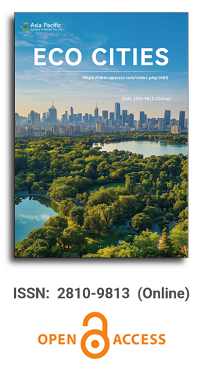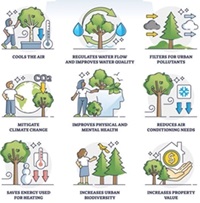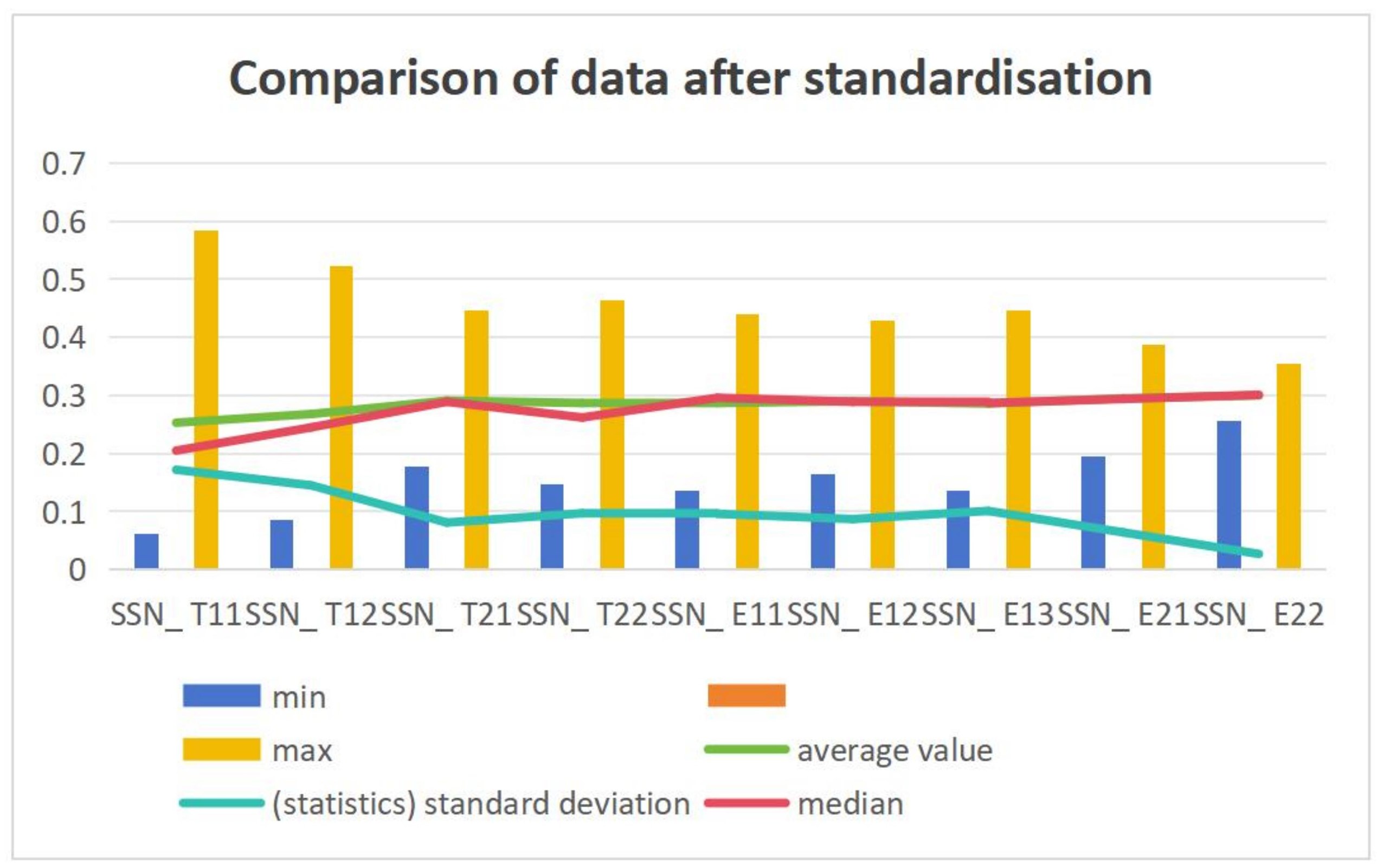
Publication Frequency
Semi-annual
Journal Articles
Search
Search scope
Volume Arrangement
Featured Articles

The exacerbation of climate change impacts within metropolitan areas is a well-documented phenomenon, often leading to severe consequences that pose significant risks to human populations. The impact of urban vegetation and planting design on these factors can be observed. However, it is worth mentioning that while there is an extensive body of literature on the consequences of climate change, there is a relatively small number of studies specifically focused on examining the role of vegetation as a mitigating factor in urban environments. This review paper aims to critically examine existing studies pertaining to the role of urban vegetation in mitigating the detrimental effects of the urban environment. The objective is to offer practical recommendations that can be implemented by city planners. By conducting a comprehensive examination of the literature available in Scopus, Web of Science, and Google Scholar, employing specific keywords pertaining to urban vegetation and climate change, we have identified five prominent concerns pertaining to the urban environment. These concerns encompass particulate matter, gaseous pollution, noise pollution, water runoff, and the urban heat island effect. The present analysis highlights that the impact of urban vegetation on the negative consequences of climate change cannot be unequivocally classified as either positive or negative. This is due to the fact that the influence of urban greenery is intricately connected to factors such as the arrangement, makeup, and dispersion of vegetation, as well as the specific management criteria employed. Hence, this research has the potential to enhance comprehension of the multifaceted nature of urban green spaces and establish a solid groundwork for subsequent investigations.

Tourism has been instrumental in fostering regional economic growth, enhancing the quality of life of residents, and boosting the image of urban areas in Shaanxi, thanks to the accelerated economic and social development of recent years. Nevertheless, the issue of aligning urban development and tourism in terms of space, resources, and the industrial chain remains a significant concern. This paper establishes an evaluation index system for tourism and urban development in the Shaanxi region from 2009 to 2019. It then employs the systematic coupling coordination model to conduct a comprehensive analysis of the coupling coordination degree of tourism and urban development in the region, as well as its various influencing factors. The study demonstrates that the coupling and coordination degree of tourism and urban development in the Shaanxi region exhibited a trend of continuous improvement from 2009 to 2019. The region underwent three stages of development: “uncoordinated development (2009–2011), transformation development (2012–2016), and coordinated development (2017–2019).” The coupling coordination level was elevated from “mild dissonance” to “intermediate coordination” in 2019. In contrast, the tourism economic development of Shaanxi cities remains unequal, as evidenced by the existence of two distinct categories of development: the “lagging tourism economy” and the “coordinated tourism economy.” The findings of this investigation indicate that the general trend of urban development and tourism in Shaanxi is favorable; however, the disparities in the progress of the tourism economy among cities necessitate additional regional coordination and cooperation. The theoretical support for the relevant research and a reference basis for tourism development planning and urban policy making are provided by the evaluation index system and the systematic coupling coordination model proposed in this paper. This will facilitate the sustainable and coordinated development of the tourism industry and cities in Shaanxi.
| Issue | Title | |
| Vol 2, No 2 (2021) | Environmental strategy of improving green space in Tawaka City, Barinas State | Abstract PDF |
| Lenies Jesús Piña Retamoza | ||
| Vol 2, No 1 (2021) | Evaluation of ecological civilization city construction level in Longnan area based on entropy weight TOPSIS model | Abstract PDF |
| Jingchuan Zhang, Hongyu Liu | ||
| Vol 4, No 1 (2023) | Exploring traffic accidents patterns: Spatial distribution and socio-economic determinants | Abstract PDF |
| Pires Abdullah, Tibor Sipos | ||
| Vol 4, No 1 (2023) | Feasibility and effects of GIS-based municipal solid waste vehicle routing for Bahrain | Abstract PDF |
| Ahmed Mohamed Rafat Omar, Uneb Gazder, Mohammed Raza Mehdi, Mudassar Arsalan | ||
| Vol 1, No 1 (2020) | Goal orientation and action path of eco city cluster construction | Abstract PDF |
| Yuming Wang | ||
| Vol 3, No 1 (2022) | Green urban planning opportunities in northeastern Argentina: Urban resistance | Abstract PDF |
| Mario Ruben Berent, Geraldine Horñachek, Aníbal Bennato | ||
| Vol 4, No 1 (2023) | Investigating residents’ willingness to participate in urban edible landscaping: Perspectives from China | Abstract PDF |
| Yansha Xiao, Chun-Chen Chou, Kenji Doi, Kento Yoh | ||
| Vol 3, No 1 (2022) | Knowledge map analysis of International Eco city research frontier ——- From the perspective of CO word network analysis | Abstract |
| Zhenliang Xu, Yuna Zhao, Wenxia Zhou | ||
| Vol 1, No 1 (2020) | Medellin: City of crossroads. Poverty, urban model and social change of green belt project | Abstract |
| Juan David Echeverry Tamayo | ||
| Vol 1, No 1 (2020) | Medellin: City of crossroads—Poverty, urban model and social change of the green belt project | Abstract PDF |
| Juan David Echeverry Tamayo | ||
| Vol 1, No 1 (2020) | Nantes vs Shenzhen: Comparison and reflection on the development characteristics of green cities in France and China | Abstract PDF |
| Yan Zhao, Jiaxin Zheng | ||
| Vol 1, No 2 (2020) | Performance evaluation of urban two oriented society development in Hunan Province from the perspective of low carbon | Abstract PDF |
| Xiao Liu | ||
| Vol 1, No 2 (2020) | Quality evaluation of low carbon ecological city based on development stage—Take Shandong Province as an example | Abstract PDF |
| Gang Lei, Xianhua Wu | ||
| Vol 1, No 2 (2020) | Recognition of livable ecological city in China | Abstract PDF |
| Luojia Wang, Xiaofeng Dong | ||
| Vol 3, No 2 (2022) | Research on evaluation of ecological livable city based on residents’ satisfaction—Take Zhuzhou as an example | Abstract PDF |
| Shujia Tan | ||
| Vol 1, No 2 (2020) | Research on ideas and directions of ecological land construction | Abstract PDF |
| Haiyang Qiang | ||
| Vol 3, No 2 (2022) | Research progress of eco city evaluation | Abstract PDF |
| Xuefeng Yang, Yi Zhou | ||
| Vol 3, No 2 (2022) | Resilience, architecture, and urbanization in sustainable urban development in Latin America: Lacan Cordia | Abstract PDF |
| Sonia Emilia Leyva Ricardo, José Armando Pancorbo Sandoval, Bolívar Josué Encarnación Fernández, Renato Patricio Erazo Rivera, Ramiro Lapeña Sanz | ||
| Vol 1, No 1 (2020) | Strategic thinking on the new urbanization road in the era of ecological civilization | Abstract PDF |
| Juan Huang | ||
| Vol 3, No 2 (2022) | Sustainability, planning and urban development: Seek key integration by studying recent cases | Abstract PDF |
| Francisco Sergio Campos-Sánchez, Francisco Javier Abarca-Álvarez, Alvaro Domingues | ||
| Vol 2, No 2 (2021) | Sustainable urban rights | Abstract PDF |
| José Zamorano Wisnes | ||
| Vol 2, No 2 (2021) | The contribution of urban climatology is the introduction of sustainable eco city development knowledge of the capital ministry, Katamaka province, Argentina | Abstract XML |
| Uriel Flores, Belén Fernández, Dana Navarro | ||
| Vol 2, No 2 (2021) | The contribution of urban climatology is the introduction of sustainable eco city development knowledge of the capital ministry, Katamaka Province, Argentina | Abstract PDF |
| Uriel Flores, Belén Fernández, Dana Navarro | ||
| Vol 3, No 1 (2022) | The return of river life—Urban river ecosystem restoration based on biodiversity enhancement | Abstract PDF |
| Xingzhong Yuan, Enrui Jia, Yangjing Liu, Song Chen | ||
| Vol 4, No 1 (2023) | The utilizability of non-flammable R471A with low-GWP in air-conditioning systems | Abstract PDF |
| Atilla Gencer Devecioğlu, Vedat Oruç, Tuba Taneli | ||
| 51 - 75 of 79 Items | << < 1 2 3 4 > >> | |
Editor-in-Chief

Chinese Academy of Sciences, China
Indexing & Archiving
News & Announcements
2024-08-08
Meet our new EBMs!
The journal is pleased to welcome a new team of editorial board members dedicated to collaborating in order to elevate the journal's quality and prominence.
2024-07-11
Eco-cities are becoming a reality!
In the context of eco-city development, the term "eco-city" encompasses a multifaceted ecosystem characterized by the interdependence of natural, social, and economic systems. This concept emphasizes the need for sustainability through environmental friendliness, social equity, and economic growth. Various models of eco-cities, including garden cities, green cities, and landscape cities, reflect the ongoing exploration of achieving harmony between humans and nature in urban living environments.
Member Application
Journal Center
Asia Pacific Academy of Science Pte. Ltd. (APACSCI) specializes in international journal publishing. APACSCI adopts the open access publishing model and provides an important communication bridge for academic groups whose interest fields include engineering, technology, medicine, computer, mathematics, agriculture and forestry, and environment.



.jpg)

.jpg)



